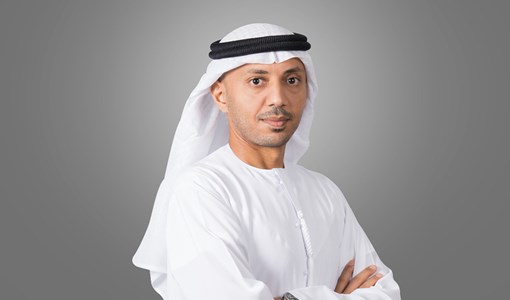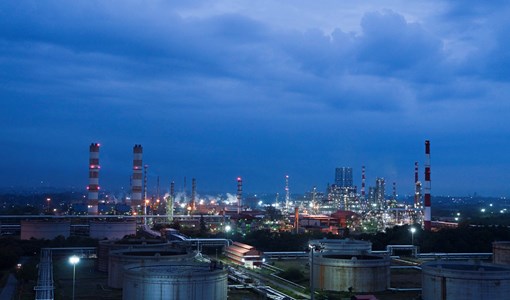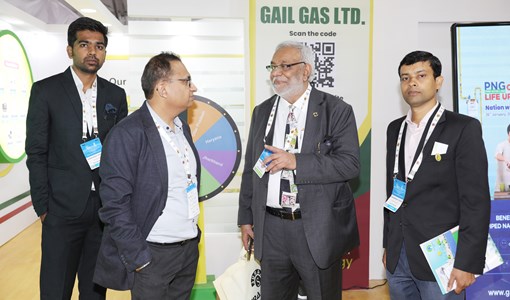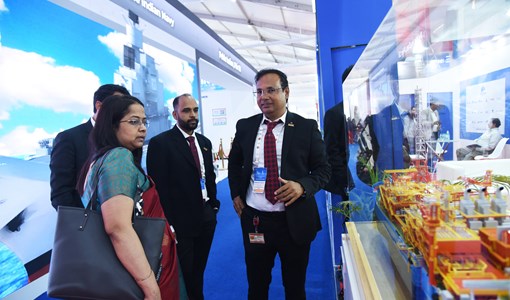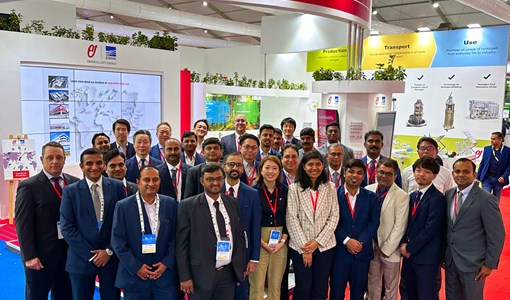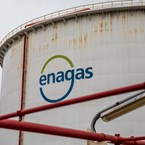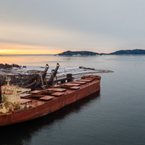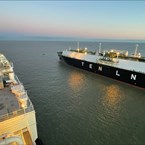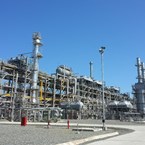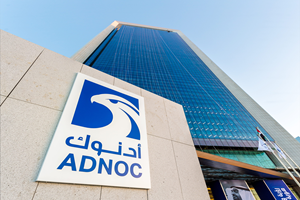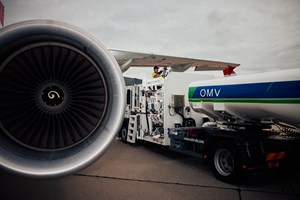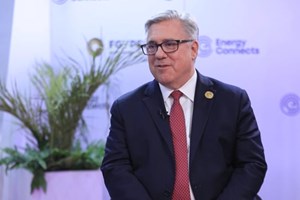Expansion of Thailand’s PTTEP through partnership and technology
Phongsthorn Thavisin, President and CEO of PTTEP speaks about the ambitions of Thailand’s E&P arm and why the Middle East is a major part of this expansion strategy
Your company is becoming more active across the Middle East. Have you any plans for further expansion in the region and into which areas?
In order to enhance competitive advantages and maintain sustainable growth amid the challenges the industry is facing now and in the future, we are moving forward with an “Expand” strategy, which we’ve actively implemented earlier this year. We have now successfully achieved several major milestones.
Previously our focus had been towards Thailand, Myanmar and Malaysia as part of the “Coming-Home Strategy” - a dual strategy for South East Asia to consolidate our existing position while at the same time seeking to expand our presence in the region. This has most obviously been illustrated by the recent acquisition of Murphy Oil Corporation’s assets in Malaysia.
But in parallel during that same period PTTEP has also been moving forward to re-establish our presence in the Middle East and the successful conclusion of several major milestones this year is the result of this.
Our decision to expand to the Middle East, especially the United Arab Emirates (UAE), was inspired by ADNOC’s CEO Dr. Sultan Ahmed Al Jaber’s determination to raise UAE’s production capacity from 3.8 million barrels per day (BPD) to 5 million BPD by 2030. Therefore, early this year, we made significant moves in the UAE with our strategic partner Eni and were awarded two offshore exploration blocks by ADNOC.
Following that, we successfully acquired Partex, an oil company with a worldwide presence especially in the Middle East since 1938. As part of this acquisition one of the significant assets is the consortium in the PDO Block 6 Project, the largest onshore producing oil asset in Oman. We will also be part of the consortia in other important projects in Partex’s portfolio which totals 7 assets across 5 countries, including the UAE, Oman, Kazakhstan, Angola and Brazil. Of these Oman and UAE are the key countries where Partex has invested. These recent developments will allow us to build on existing business partnerships with both the national oil companies of Oman and UAE, and also new ones with other world-class oil and gas players.
How important is the Asia region in terms of oil and gas and do you see it becoming more influential on a global scale?
Global energy demands are expected to grow especially in the Asia region, with fossil fuels including crude oil, natural gas, and coal remaining the dominant source for more than 80 per cent of world energy. The estimated significant growth in energy consumption in the region will require an additional $2.5 trillion of investment by 2040, with China and India taking the lead as most of the world’s oil and gas exports increasingly will be directed to the Asia Pacific region.
On the supply side, I think there is still significant reserves potential, especially in our home region of Southeast Asia. Therefore, regarding our “Coming-Home Strategy”, we will continue to focus on Thailand and South East Asia which we will maintain as a strategic investment areas. In many ways this is part of a global trend for the industry which has seen companies pivot back to their core or home areas. The benefit of this approach is that we can return to areas where we have experience. We also believe that technological advancement will enable us to unlock the hidden potential of oil and gas sources.
The last year or so has seen a lot of developments in terms of business expansion. This started in December 2018 when PTTEP was named as the successful bidder for the Bongkot and Erawan concessions, the two largest gas fields in the Gulf of Thailand. They are a vital source of energy supply to Thailand with a combined gas production accounting for 60 per cent of total domestic output.
For Thailand, PTTEP has positioned itself as the Gulf of Thailand champion and we are now executing the transition plans for Bongkot and Erawan. For the Bongkot field we are the existing operator and are able to invest immediately to ensure delivery of contracted production levels. For Erawan we have to work on investment plans which will be ready to be executed on the completion of the transfer of operatorship. Erawan will mark a new beginning for PTTEP with our new partner, UAE’s, Mubadala, who shares many of the same objectives, which we hope will be the foundation with which we can build further collaboration on.
In Malaysia, we have a number of blocks in Sarawak. Hopefully we will have more soon on the Peninsular Malaysia. I think Malaysia still has demand for more gas to supply LNG plants so there is still a lot of potential. We will also look to expand our business opportunities in areas such as the Gas Value Chain business in Myanmar in terms of Gas-to-Power. Outside the South East Asia region we will continue to explore opportunities in the Middle East with the strategic partners I mentioned.
How important is the recent large scale find off the coast of Sarawak to the company’s future plans and Thailand’s energy supplies?
The drilling result of the Sarawak SK410B Project indicates that it holds approximately 2-4 trillion cubic feet (TCF) of natural gas resources which is the largest discovery of petroleum resources that PTTEP has ever made as an operator.
Actually the history of SK410B project can be traced back some 30 years. At that time, the Lang Lebah well was abandoned due to the inability to make the discovery commercial as well as high subsurface uncertainty and drilling risks. But through a process of exploration supported by advanced subsurface technology and multidisciplinary collaboration as “one team one goal”, we identified an interesting prospect which became the focus of the exploration campaign. Using our expertise gained from operations in the Gulf of Thailand and applying them to the Malay basin considerably contributed to our eventual success.
This discovery further solidifies our presence in the country and builds on other progress we have made in Malaysia through the acquisition of Murphy Oil Corporation’s assets and the successful bid for 2 further offshore exploration blocks. As a whole these developments today elevate Malaysia to be one of PTTEP’s major investment countries after Thailand and Myanmar.
Through these new acquisitions, we are building a “Cluster Model” that creates opportunities for collaboration and knowledge sharing for long-term value creation for both countries. For our partner Petronas, they have strong expertise in deep water and floating LNG. For PTTEP, we have skills and experience in the Gulf of Thailand that contains marginal fields with small fractal reservoirs. I believe these combined skill sets will allow us to build on our competency to be ready for exploration and operations in other assets and contribute to both Thailand and Malaysia’s long term energy resources.
What is PTTEP’s role in digitalisation transformation? How important is new technology to PTTEP and which technologies do you think the industry should prioritize to maximize growth, sustainability and productivity?
In my view, the petroleum exploration and production business will continue to face a number of challenges in the next few years, especially those brought by Disruptive Technology. Today, technological innovations and alternative energy plays a more significant role in the energy industry, such as energy storage systems and electric vehicles. With the trend of cost reduction and improved efficiency in renewable energy and electric vehicle businesses, the challenges for the petroleum industry have significantly increased. In this time of sudden changes, adaptability and an ability to transform determine how a business can maintain its competitiveness. If we are not ready and cannot adapt to the changes in time we will be left on the sidelines.
In PTTEP, we adjusted our business strategy to accommodate advancing technologies in 2018. We established the Business and Organization Transformation Group to oversee and drive transformation in three main areas. The first one is “Digital Transformation” to enhance competitiveness through technology such as Artificial Intelligence, Machine Learning and the Internet of Things (IoT). This will help to increase exploration successes, enable effective and quick informed decisions, and enhance more production and petroleum resources development capacity. Another area is “Organization Transformation” that will allow us to adopt a more streamlined structure and management process. We will build an agile and efficient organisation for accelerated decision-making and response, while reducing costs and natural resources required for operations.
In addition to transformation, we are also searching for “New Business” opportunities alongside our core business to create future growth. We are focusing on three new businesses the natural gas value chain such as gas turbine power plants (Gas to Power), LNG related businesses, and commercialisation of technological innovation projects developed within PTTEP including Robotics and AI, Predictive Maintenance, and Renewable Energy. This year we have launched a new company, AI and Robotic Ventures or ARV. ARV solutions builds upon our specialised technologies in E&P which have been instrumental in enhancing our competitive capability. This expertise will also become available to support other industries to boost their efficiency and business value.
We trust that the transformation strategy and our new businesses will drive the company to strong and sustainable growth and enable it to meet the challenges facing the oil and gas industry.
PTTEP’s vision is to become the “Energy Partner of Choice”, how do you turn that vision into reality?
PTTEP was established in 1985 and for more than three decades we have made significant progress to enhance our competitive advantages and achieve sustainable growth. In spite of transforming ourselves to meet future challenges, we also need to ensure we continue to be accepted by our stakeholders which is the inspiration for our vision to become the “Energy Partner of Choice”. We believe that for today and tomorrow successful businesses are those that have embraced collaboration which will be just as important as being able to compete.
Our vision to be the “Energy Partner of Choice” has been in the making for much of the last 30-years through collaboration with partners like Total, Chevron, Shell and others. But moving forward the new vision statement is a clear shift in PTTEP’s emphasis from being a ‘leader in Asia’ to being a ‘partner’. This will accelerate our vision further and it has enabled us to solidify existing partnerships and form new alliances such as with Eni and Mubadala.
What are the main challenges the sector will have to face?
Oil price volatility driven by sluggish growth of the global economy will remain a major challenge for the E&P industry. Although the range of oil price volatility has narrowed, current stability is built on a number of supply side factors namely OPEC production cuts which could come under pressure. Challenges to the supply side status quo can come from factors such as Iran’s response to sanctions, the potential impact from U.S. pipeline debottlenecking and increased market access, which is expected will occur at the same time as a possible increase in US shale oil production during 2020-2025. On the demand side there are a number of factors which could dampen economic growth and in turn oil prices, such as the final resolution of Brexit i.e. whether the UK negotiates a hard or soft exit from the EU.
In addition to fluctuating oil prices, the exploration and production business will continue to face a number of challenges in the next few years especially those brought by disruptive technology and the transition to low carbon energy such as renewables. For PTTEP, as mentioned, while I believe that while exploration and production will remain our core business we will also need to focus on new businesses in order to adjust to the changing industry climate.
And what do you see as the major opportunities for the industry in the coming years?
According to the current trends in the oil and gas industry there is both a rising demand for energy while at the same time a demand to ensure reduced carbon emissions. This makes natural gas an obvious and essential component (as well as clean coal) of any lower carbon energy future. Currently natural gas has seen the highest consumption growth and as part of this I think the market will witness another round of investment in LNG to meet rising demand which by 2030 is expected to be double current levels and satisfy the need for cleaner alternative energy sources.
Our recent progress in the Mozambique Area 1 project (a consortium led by Anadarko in which PTTEP has 8.5 per cent of participating interest), means we have successfully secured long-term LNG sales of 11.1 million tonnes per annum (MTPA) with key LNG buyers in both Asia and Europe. This represents more than 80 per cent of the plant’s capacity and at the same time positions us to be able to meet increased demand. The Mozambique Area 1 project will become one of the world’s largest LNG supply hubs.
PTTEP are able to view these challenges as opportunities with our portfolio which is currently weighted towards natural gas in line with global trends. We are looking to maintain those ratios with gas 70-80 per cent, and oil 20-30 per cent.
Whatever the case if you look to the past any energy transitions have taken decades to transform the landscape, and the ones currently under way — which is seeing a shift from oil and gas to newer energy technologies — will also occur at a similar gradual pace.
During the transition to a low carbon society PTTEP must ensure that we have a strategy and plans in place ready to invest in our current businesses so that they remain relevant and be part of the clean energy future while also searching for business opportunities in renewable alternative energy.
How important do you feel ADIPEC is as a forum to promote industry excellence and co-operation?
I think ADIPEC brings so many benefits to the industry as a forum to meet and create connections, update on current situations and also to share views on how the industry is shifting. ADIPEC is an opportunity PTTEP cannot miss out on as at this time we are seeking partnership opportunities in the Middle East. It will be a great opportunity for us to connect with our partners and other key players who might be our partners in the future, ranging from IOCs and NOCs to contractors and service companies.
What would you like to take away from the event this year?
During the four days at ADIPEC, PTTEP will showcase our advanced technology and innovations developed by ARV. ARV has pioneered the development of complex AI & Robotic solutions for E&P and non-E&P industries. One of the highlights will be the “Inspection-class Autonomous Underwater Vehicle (IAUV)” which performs preventive inspection of underwater facilities such as pipelines and platform structures without the need for a costly support vessel or a large supporting crew. We are confident that ARV has huge potential for growth as it offers a unique solution not matched by current AI technology. This is because ARV has been specifically developed to support the oil and gas business. We expect to receive positive feedback from the event and hopefully it will lead to future collaboration.
KEEPING THE ENERGY INDUSTRY CONNECTED
Subscribe to our newsletter and get the best of Energy Connects directly to your inbox each week.
By subscribing, you agree to the processing of your personal data by dmg events as described in the Privacy Policy.

Energy Workforce helps bridge the gender gap in the industry
Mar 08, 2024
EGYPES Climatech champion on a mission to combat climate change
Mar 04, 2024
Fertiglobe’s sustainability journey
Feb 29, 2024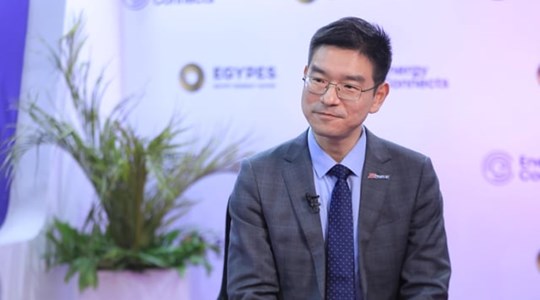
Neway sees strong growth in Africa
Feb 27, 2024
P&O Maritime Logistics pushing for greater decarbonisation
Feb 27, 2024
India’s energy sector presents lucrative opportunities for global companies
Jan 31, 2024
Oil India charts the course to ambitious energy growth
Jan 25, 2024
Maritime sector is stepping up to the challenges of decarbonisation
Jan 08, 2024
COP28: turning transition challenges into clean energy opportunities
Dec 08, 2023
Why 2030 is a pivotal year in the race to net zero
Oct 26, 2023Partner content

Ebara Elliott Energy offers a range of products for a sustainable energy economy

Essar outlines how its CBM contribution is bolstering for India’s energy landscape

Positioning petrochemicals market in the emerging circular economy

Navigating markets and creating significant regional opportunities with Spectrum




